Child Care Aware® of America Statement On The House Appropriations Subcommittee on Labor, Health and Human Services, and Education Markup
WASHINGTON, DC — In response to the child care funding increase passed yesterday by the House Appropriations Subcommittee on Labor, Health and Human Services, and Education, Child Care Aware® of America (CCAoA) Executive Director Dr. Lynette M. Fraga released the following statement:


.jpg?width=770&name=shutterstock_15766120%20(1).jpg)





